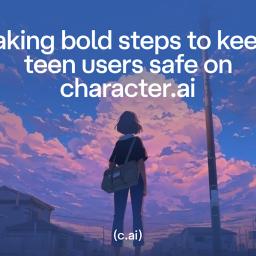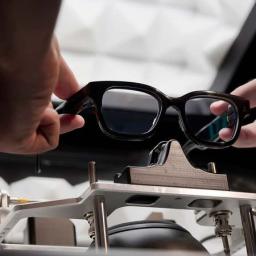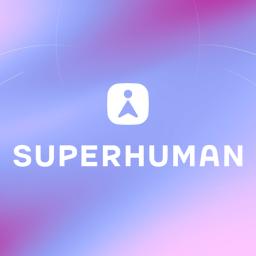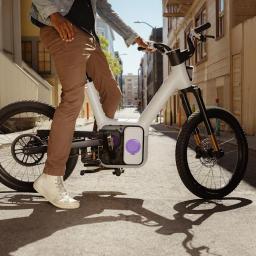 |
on (#713RB)
Sometimes, game development is a labor of love. Other times, it's an agonizing experience akin to pulling teeth. More than a decade after first announcing the project, Lunar Software and Raw Fury appear to be in the home stretch with their project Routine. The sci-fi horror game has been given a December 4, 2025 release date. For their sakes, I hope it comes to pass.The duo first announced Routine all the way back at Gamescom in 2012 and gave it a 2013 release date. After that window came and went, the project went dark until Summer Game Fest 2022, with promises that the game a) still existed and b) had been fully remade for the new generation of gaming hardware. If the current schedule holds, Routine will be on Steam and Xbox, including day one availability on Game Pass, by the end of this year.The Aliens vibes are strong in the brief release date teaser. Think film grain effects, janky gadgets and of course the looming threat of death around every corner. The player will explore an abandoned lunar base to try and figure out how everything went horribly wrong before your arrival. The answer seems to involve murderous robots that would make Weyland-Yutani proud.This article originally appeared on Engadget at https://www.engadget.com/gaming/13-years-after-it-was-announced-sci-fi-horror-game-routine-has-a-release-date-of-december-4-205604793.html?src=rss
|
 Engadget is a web magazine with obsessive daily coverage of everything new in gadgets and consumer electronics
Engadget is a web magazine with obsessive daily coverage of everything new in gadgets and consumer electronics
| Link | https://www.engadget.com/ |
| Feed | https://www.engadget.com/rss.xml |
| Copyright | copyright Yahoo 2026 |
| Updated | 2026-01-04 23:15 |
 |
on (#713KN)
Microsoft's Azure cloud service is recovering from an outage that affected key apps and services like Microsoft 365 , Xbox and Minecraft. All three showed spikes in outage reports on DownDetector around 12PM ET, and the Azure status page indicates that Microsoft first observed technical issues around 12PM ET.In its most recent Azure status update at 3:57PM ET, Microsoft says that it initiated the deployment of our last known good configuration,'" and that customers may have begun to see initial signs of recovery." The company is continuing to reroute traffic through healthy nodes" and believes that Azure should be fully recovered by 23:20 UTC," or 6:20PM ET.At the peak of the outage, users on Reddit reported issues loading Game Pass on Xbox consoles, along with limited access to productivity and enterprise apps. The outage also appeared to affect Microsoft support pages and some airline websites.
|
 |
on (#713RC)
General Motors announced that it will cut more than 1,700 manufacturing jobs in reaction to changes in the electric vehicle market. "In response to slower near-term EV adoption and an evolving regulatory environment, General Motors is realigning EV capacity," the company said in a statement reported by CNBC. "Despite these changes, GM remains committed to our US manufacturing footprint, and we believe our investments and dedication to flexible operations will make GM more resilient and capable of leading through change."The layoffs are primarily happening at a Michigan plant that builds GM's EVs and at an Ultium Cells battery cell plant in Ohio. The company is also "temporarily" laying off 700 at an Ultium Cells plant in Tennessee.The regulatory issues in question are likely the $7,500 federal tax rebate that had previously been granted to EV purchases, which expired earlier this year under the "Big Beautiful Bill" that made things a lot less pretty for many environmentally-focused programs and industries. But GM had also said earlier this month that it would sunset much of its hydrogen fuel cell R&D in order to place more focus on batteries, charging tech and EVs, so announcing layoffs in those very areas is a rough move.This article originally appeared on Engadget at https://www.engadget.com/gm-will-cut-more-than-1700-jobs-in-ev-and-battery-manufacturing-200814378.html?src=rss
|
 |
by Will Shanklin on (#713PJ)
A decade ago, when smart speakers with built-in voice assistants were the hot new thing, many imagined they'd quickly evolve into highly intelligent companions. (Think C-3PO or Star Trek's Data living inside a speaker.) That road has been much longer than expected, as virtual helpers like Alexa, Siri and Google Assistant seemed to sit in neutral for years.But now that generative AI is here (for better or worse), smart speakers are finally scratching the surface of those expectations. Google's new version, Gemini for Home, is now available to try. Here's how.First, keep in mind that the Gemini for Home voice assistant is in early access. This means Google is gathering feedback about its features, and - as with all generative AI - it's wise to assume it will make mistakes. If or when it does, you can send feedback to Google in the Google Home app or by saying, "Hey Google, send feedback."Devices compatible with Gemini for Home voice assistantYou'll also want to check your speaker model before diving in. The full Gemini for Home experience is available to try on the Google Nest Hub (2nd gen), Google Nest Audio, Google Nest Mini (2nd gen) and Google Nest Hub Max. Those models all support Gemini Live, which enables conversational back-and-forth chat with natural follow-up questions.Other models support everything but Gemini Live. That list includes the Google Nest Wifi point, Google Nest Hub (1st gen), Google Home Max, Google Home Mini (1st gen) and Google Home.Another point is that once you dive in, your Google Assistant days will be over (on your speakers, anyway). That's because Google says that, once you upgrade to Gemini for Home, your compatible devices can't downgrade to Assistant. That shouldn't be a problem, but it's worth keeping in mind before you take the plunge.How to sign up for early Gemini accessOnce you've confirmed that your speaker(s) are at least partially compatible, head to the Google Home app on a mobile device. There, tap your profile picture (or initials) on the top right. Then tap Home Settings > Early Access. Congratulations: You've put in your request.The bad news is you may have to wait a bit to confirm your entry into the beta program. Once you're in, you'll see a notification from the Google Home app that reads, "Introducing Gemini for Home." Select that, and follow the prompts. (If you accidentally dismiss the notification, you'll see the setup banner under Home settings in the Google Home app.)Cherlynn Low for EngadgetAt that point, all compatible speakers in your home will be upgraded to Google's more intelligent AI assistant. You can now throw more advanced questions at it, similar to what you'd ask text-based chatbots like ChatGPT. Except this one sits on a shelf, ready to field your verbal requests at any moment.Keep in mind that Gemini Live requires a Google Home Premium subscription. The standard version costs $10 per month or $100 per year. Meanwhile, the advanced tier doubles that: $20 per month or $200 per year. At least for now, the only difference between the two (for these purposes) is that the pricier plan supports a camera history search feature. Both premium tiers unlock access to Gemini Live. So, if that's all you need, you can save money and get standard.Google offers plenty of examples to get started. You can get quick answers to facts, like "Hey Google, who are the top five scoring players in basketball history?" (FYI: James, Abdul-Jabbar, Malone, Bryant and Jordan.) You can also ask Gemini Live to have a chat about ingredients for people with dietary needs. Or, ask it to explain complex topics (like how Wi-Fi works) in simple terms. It may not be at C-3PO level yet, but it's certainly moving in that direction.This article originally appeared on Engadget at https://www.engadget.com/ai/early-access-for-gemini-home-voice-assistant-is-now-available-heres-how-to-get-it-191250927.html?src=rss
|
 |
by Lawrence Bonk on (#713KK)
Sony just announced the PS Plus Monthly games for November and there are some standouts. All of these titles will be available to download on November 4 until December 1.First up, there's the cat sim Stray. We praised the third-person cyberpunk adventure in our initial review, in which we lauded the game's unique mechanics and puzzles. After all, you play as a cat in a dystopian and futuristic city. That's a one-of-a-kind premise, which is one reason it became such a big hit. It'll be available for both PS4 and PS5. It's also worth noting that this was a day-one release for PS Plus Extra and Premium back in 2022.EA Sports WRC 24 is a popular racing sim developed by Codemasters, who made the Dirt series, the Grid franchise and plenty of official F1 games. This new one lets players participate in the FIA World Rally Championship (WRC.) Racers get access to a bunch of WRC, WRC2 and Junior WRC cars from the 2024 season, complete with current drivers and teams. This one is only for PS5.Totally Accurate Battle Simulator is certainly a battle similar, but not an accurate one. The game lets you design all kinds of bizarre battle scenarios with "the wobbliest physics system ever created." This is the best game ever made that lets you battle a wooly mammoth with balloon arrows, thus forcing that beast into the sky. It'll be available for both PS4 and PS5.As always, a crop of new games means that some pre-existing titles are heading to that farm upstate. You have until November 3 to download Alan Wake 2, Goat Simulator 3 and Cocoon to their game library. Dang. Last month was stacked.This article originally appeared on Engadget at https://www.engadget.com/gaming/playstation/stray-leads-novembers-lineup-of-ps-plus-games-180339318.html?src=rss
|
 |
by Matt Tate on (#713KM)
Character.AI will no longer permit teenagers to interact with its chatbots, as AI companies face increasing pressure to better safeguard younger users from harm. In a statement, the company confirmed that it is removing the ability for users under 18 to engage in any open-ended chats with AI on its platform, which refers to back-and-forth conversations between a user and a chatbot.The changes come into effect on November 25, and until that date, Character.AI will presents users with a new under-18 experience. It'll encourage its users to use chatbots for creative purposes that might include, for example, creating videos or streams, as opposed to seeking companionship. To manage the transition, under-18s can now only interact with bots for up to two hours per day, a time limit the company says it will reduce in the lead-up to the late November deadline.Character.AI is also introducing a new age assurance tool it has developed internally, which it says will "ensure users receive the right experience for their age." Along with these new protections for younger users, the company has founded an "AI Safety Lab" that it hopes will allow other companies, researchers and academics to share insights and work collaboratively on improving AI safety measures.Character.AI said it has listened to concerns from regulators, industry experts and concerned parents and responded with the new measures. They come after The Federal Trade Commission (FTC) recently launched a formal inquiry into AI companies that offer users access to chatbots as companions, with Character.AI named as one of seven companies that had been asked to participate. Meta, OpenAI and Snap were also included.Both Meta AI and Character AI also faced scrutiny from Texas Attorney General Ken Paxton in the summer, who said chatbots on both platforms can "present themselves as professional therapeutic tools" without the requisite qualifications. Seemingly to put an end to such controversy, Character.AI CEO Karandeep Anand told TechCrunchthat the company's new strategic direction will see it pivot from AI companion to a "role-playing platform" focused on creation rather than mere engagement-farming conversation.The dangers of young people relying on AI chatbots for guidance has been the subject of extensive reporting in recent months. Last week, the family of Adam Raine, who claim that ChatGPT enabled their 16-year-old son to take his own life, filed an amended lawsuit against OpenAI for allegedly weakening its self-harm safeguards in the lead-up to his death.This article originally appeared on Engadget at https://www.engadget.com/ai/characterai-to-ban-teens-from-talking-to-its-chatbots-180027641.html?src=rss
|
 |
on (#7132S)
California-based AI and robotics company 1X is now accepting pre-orders for its humanoid robot NEO, which was designed to automate everyday chores and to offer personalized assistance. Users will be able to control NEO and have it accomplish tasks around the house with the click of a button or a verbal command. It will come with the ability to do basic tasks autonomously when it starts shipping next year, including opening doors, fetching items and turning the lights on or off. However, if early adopters want NEO to be capable of more specific or complex tasks, they'd have to be comfortable with the idea of a human teleoperator controlling the robot remotely and seeing inside their homes.In an interview with The Wall Street Journal's Joanna Stern, 1X CEO Bernt Bornich explained that the AI neural network running the machine still needs to learn from more real-world experiences. Bornich said that anybody who buys NEO for delivery next year will have to agree that a human operator will be seeing inside their houses through the robot's camera. It's necessary to be able to teach the machines and gather training data so it can eventually perform tasks autonomously. "If we don't have your data, we can't make the product better," he said.Bornich admitted that much of the work will be done by teleoperators in the beginning. Owners will have access to an app where they can schedule when the teleoperator can take over NEO and where they can specify the task they want the machine to do. He said 1X is putting control in the hands of the owner to respect people's privacy as much as possible. The company can blur people so that the remote operator doesn't see them, and owners can designate no-go zones in their homes that the operator cannot go to. Teleoperators also cannot take control of NEO without the owner's approval. Of course, there's always potential security breaches to think of - Bornich at least assured that NEO has several layers of security to prevent it from hurting people.If you want to see more of the robot in action, the WSJ video is definitely worth a watch.1X NEO is available in tan, gray and dark brown. It's now available for pre-order from the company's website with a deposit of $200. Those who want early access to it can get it for $20,000, but it will also be available as a subscription service of $499 a month.This article originally appeared on Engadget at https://www.engadget.com/ai/1x-neo-is-a-20000-home-robot-that-will-learn-chores-via-teleoperation-040252200.html?src=rss
|
 |
on (#713KQ)
YouTube is rolling out some updates aimed at making visuals look better on its TV apps, including automatic AI video upscaling. To begin with, YouTube plans to upscale videos that were uploaded in under 1080p to an HD resolution. It aims to support 4K upscaling in the future.The platform will still retain the original files and video resolution options. Creators can opt-out of the AI upscaling feature, which it's calling Super Resolution, as well as automated audio adjustments. The platform says it's also working with select creators to test larger video uploads to allow for higher-quality footage.Creators will soon be able to upload thumbnails in higher quality too. YouTube will increase the thumbnail file limit from 2MB to 50MB.As for viewers, it seems like YouTube saw those annoying automatic previews Netflix has had for the last decade and decided to copy that playbook. "Viewers will be able to see and flip through their favorite YouTube channels with immersive previews on the homepage, enhancing content discovery and engagement," Kurt Wilms, the senior director of product management for YouTube on TV, wrote in a blog post.Elsewhere, YouTube has added a contextual search function to its TV apps. When you search for something from a creator's channel page, videos from said channel will appear first in the results. That's a smart, logical idea.With people watching YouTube on TV more than on mobile these days, it only makes sense for the platform to invest in improving the experience there.This article originally appeared on Engadget at https://www.engadget.com/entertainment/youtube/youtube-adds-automatic-ai-upscaling-for-low-res-videos-170342511.html?src=rss
|
 |
by Lawrence Bonk on (#713KR)
It looks like a hundred thousand people fell for a fake NVIDIA livestream featuring an AI-generated version of CEO Jensen Huang, as reported by PC Gamer. Perhaps the scariest part is that the fake stream ran at the same time as an actual NVIDIA event and dwarfed the live viewership numbers.The actual keynote speech of NVIDIA's GPU Technology Conference (GTC) garnered around 20,000 live views, while the fake stream maxed out at 100,000 live views. Even weirder? The fake Huang was talking about some crazy stuff mostly involving bogus crypto investments.The deepfake spoke of "a crypto mass adoption event that ties directly into NVIDIA's mission to accelerate human progress." The avatar urged viewers to scan a QR code to, uh, send in cryptocurrencies. It's unclear if any of the 100,000 viewers fell for this obvious scam that asked people to send the world's richest company money to "accelerate human progress."The fake video has since been deleted. I haven't been able to check it out to see just how real it looked and, thereby, how it was able to lure in 100,000 viewers. Before we all start screaming into the night about how reality doesn't matter anymore, there are a few things worth considering.First of all, we don't know anything about the 100,000 accounts that were watching the fake stream. We don't know where they're from or even if the accounts were tied to real people. It's also worth noting that the real stream has since garnered 200,000 views, despite just having 20,000 live viewers. We don't know what kind of promotional tools the fakers used to draw in people or how long people stayed once they clicked.Finally, there's Huang himself. The man has hosted four GTC conferences just this year, and dozens upon dozens in previous years. There is an absolute abundance of footage of him standing on a stage and talking about stuff. That's a whole lot of video for bad actors to use as AI training data.Also, the real stream wasn't exactly a barn burner. The most notable news we got was the announcement of a partnership with Uber to promote autonomous driving. This wasn't an event to hype up new graphics cards or anything like that. The company revealed some government contracts, if that's your bag.
|
 |
on (#713KS)
Magic Leap is once again trying to make a name for itself in augmented reality. The company revealed an Android XR smart glasses prototype and it extended an existing partnership with Google. It said it built the glasses "as a reference design for the Android XR ecosystem."They look similar to other modern smart glasses, with thick frames to house all of the electronics and what appears to be a camera lens on the left side. Magic Leap hasn't revealed too much more about the glasses, other than to say that, "by combining Magic Leap's waveguides and optics with Google's Raxium microLED light engine, the two companies are developing display technologies that make all-day, wearable AR more achievable."The glasses, of course, use Google's Android XR operating system. Samsung's Galaxy XR headset, the first device that runs on the operating system, arrived last week.Although it has been through the wringer over the last several years, Magic Leap is still kicking around. In 2022, Saudi Arabia's Public Investment Fund became the majority owner of Magic Leap and it has since pumped over $1 billion into the company.Magic Leap failed to make headway in the consumer market with its AR headset after reportedly selling just 6,000 units in six months. Magic Leap pivoted to focus on the enterprise market with the Magic Leap 2, which it released in 2022.In July 2024, it was said to have laid off 75 employees - primarily from the sales and marketing teams - as part of another change in direction to license its tech. A couple of months before that, Magic Leap announced a deal with Google to "advance the potential of [extended reality] technologies," and that partnership is starting to bear fruit. It was reported late last year that Google brought in 100 Magic Leap staffers to work on Android XR projects.This article originally appeared on Engadget at https://www.engadget.com/ar-vr/magic-leap-reveals-an-android-xr-smart-glasses-prototype-165200068.html?src=rss
|
 |
by Will Shanklin on (#713A3)
The Nothing Phone universe continues to expand. On Wednesday, the company launched the fourth model in the Phone 3 lineup: the Nothing Phone 3a Lite. The cheapest model in the series, the Phone 3a Lite pairs the brand's distinct styling with solid all-around specs for an entry-level handset. However, with the company saying its non-flagship devices will soon include pre-installed apps and lock-screen ads, there may be a trade-off.First, Nothing told Engadget that the phone won't come to the US. So, Americans only have the previous trio of third-gen handsets to choose from. That's the Nothing Phone 3, Nothing Phone 3a, and Nothing Phone 3a Pro.The Nothing Phone 3a Lite uses a Panda Glass casing over an aluminum internal frame. As you can see, it retains some familiar design strokes, albeit pared down to match its 249 price. As the company describes it, the handset's "asymmetric, transparent look and nano-coating creates a beautiful balance of matte and gloss." (Poetry!) The phone ships in white and black variants. Whether Nothing's design language is your cup of tea or not, you'll be hard-pressed to find a more striking and bold design language in a budget model.The handset includes the Essential Key, a multi-purpose physical button found on all Phone 3 series models. The phone is IP54-rated for dust and water resistance.NothingNothing honors the brand's unique Glyph system (while keeping costs down) by using a notification LED. (Remember those on early Android phones?) This model's "Glyph Light" supports the lineup's Flip to Glyph feature, which switches to light-only alerts when the device is face down. The LED can stay on for "key contact and app notifications" and serve as a camera countdown timer. You can also customize its light sequences for calls and specific contacts.The handset has a hearty 5,000 mAh battery. Nothing advertises 22 hours of YouTube playback or 9.5 hours of gaming. It supports 33W fast charging, reaching 50 percent in about 20 minutes.The Phone 3a Lite has a triple-camera system. That includes a 50MP primary camera with a 1/1.57-inch Samsung sensor. Joining it are an 8MP ultra-wide and a macro lens. The rear camera system shoots 4K video at app to 30 FPS. On its front is a 16MP lens.NothingThe Nothing Phone 3a Lite has more than respectable display specs for a budget phone. It uses a 6.77-inch flexible AMOLED panel with 1,080 x 2,392 resolution (387 PPI). It has a 120Hz adaptive refresh rate and a 1,000Hz touch sampling rate. It can reach 3,000 nits peak HDR brightness and 1,300 nits outdoor brightness.The handset's processor is the 4nm MediaTek Dimensity 7300 Pro 5G. The 8-core CPU can reach up to 2.5 GHz. Nothing says the chip performs better than the MediaTek 7200 silicon in last year's Phone 2a. The company claims its CPU is 15 percent faster, its GPU supports 20 percent higher FPS, and its NPU delivers 100 percent better AI performance.The phone also uses a liquid-cooling system, which may help during intensive gaming sessions. It ships with 8GB of RAM and comes in 128GB and 256GB storage tiers.NothingThe phone runs the Nothing OS 3.5 UI on top of Android 15. The company says Nothing OS 4.0 will arrive in the first half of 2026.And that brings us back to those trade-offs. Earlier this week, Nothing confirmed to 9to5Google that its strategy moving forward will include "Lock Glimpse." This rotating lock-screen wallpaper feature includes text with links to external content hosted by a Chinese advertising company. (That firm, Boyuan, says it offers a "rich mixture of content" to help its partners "commercialize the mobile traffic.") Think of it as a slightly less obnoxious version of lock-screen ads.Fortunately, Lock Glimpse is off by default in the current Nothing OS 4.0 beta. Nothing pledges it will give users "full control over features like Lock Glimpse." However, that promise doesn't explicitly say the feature will remain off by default.Another cost-subsidizing move is Nothing's (also confirmed) embrace of pre-installed apps. The company said its "carefully considered" third-party apps are those "most people install on day one, like Instagram." In fairness, that's a common practice among Android phone manufacturers. And Nothing says it will make third-party apps removable.But again, the concessions here arguably run counter to one aspect of the brand's stated ethos: clean, bloat-free software. And if business considerations forced compromises in this area, it makes you question how long Lock Glimpse will stay off by default.The Nothing Phone 3a Lite is available now in Europe on the company website. The 128GB model costs 249 (EU) / 249 (UK). Meanwhile, the 256GB model will set you back 279 (EU) / 279 (UK).Update, October 29, 2025, 11:20 AM ET: This story has been updated to add information from Nothing about the lack of US availability and additional detail from Nothing's community post.This article originally appeared on Engadget at https://www.engadget.com/mobile/smartphones/the-nothing-phone-3a-lite-has-a-big-battery-and-triple-camera-system-130016149.html?src=rss
|
 |
by Lawrence Bonk on (#713GD)
Nintendo is teaming up with Laced Records on a couple of The Legend of Zelda: Breath of the Wild vinyl soundtrack releases, which is pretty darned cool. There's even a massive 8-LP box set that ships with some franchise-friendly bells and whistles.Let's start with that box set. It's available in limited-edition colored vinyl or standard black vinyl. At eight vinyl records, it probably includes just about every piano twinkle and wind rustle found throughout the game. All told, there are 130 newly remastered tracks.The records here are split into themes, mirroring a player's progression through Hyrule. These themes "revolve around exploring the Kingdom of Hyrule, freeing the Divine Beasts from Calamity Ganon's hold and discovering the mysteries of the Shrines."It ships with a nifty-looking collector's case and comes with 16 art prints depicting various scenes from the game. The 8-LP collection costs $195, which is high but not the worst deal in the world. That breaks down to around $24 per record.Nintendo/Laced RecordsThe double-LP collection is a more standard affair, with 34 tracks pulled from throughout the game. These include musical cues from visiting the Great Fairy Fountain, Hyrule Castle and other locations. This one costs $50 and is also available in both black and colored vinyl.Both collections are available to pre-order right now via Laced Records and My Nintendo Store. They won't be shipped until June 19, 2026.This is one of the first major Nintendo game soundtracks available in a physical format outside of Japan. Breath of the Wild is an interesting choice here for an initial vinyl release, given that the game's soundtrack is known for mood-setting vibes but not really known for bops.Composers Manaka Kataoka, Yasuaki Iwata, Hajime Wakai and Soshi Abe filled the game with gentle piano riffs, nature sounds and rhythmic pieces to accompany battles. However, it does have a few absolute bangers.This article originally appeared on Engadget at https://www.engadget.com/gaming/nintendo/nintendo-is-releasing-a-massive-breath-of-the-wild-vinyl-soundtrack-collection-on-eight-lps-151531479.html?src=rss
|
 |
by Matt Tate on (#713GE)
Grammarly is no more, at least with regards to its name. The AI-powered writing assistance tool founded in 2009 has been absorbed into a new software platform called Superhuman. It follows Grammarly's acquisition of Superhuman Mail earlier this year, with the former taking the somewhat unusual step of adopting its newly obtained company's name, rather than the other way around.Superhuman unites Grammarly, Superhuman Mail and the AI work assistant Coda (also acquired by Grammarly in 2025) in one productivity suite, allowing users to access all three tools as part of a single plan. The company has also launched a new AI assistant called Superhuman Go that is included in every Superhuman plan tier and is baked into the Grammarly browser extension for Chrome and Edge.Superhuman Go's capabilities include assisting with professional-sounding email responses, fetching information and scheduling meetings. At launch it can connect to your Google Workspace apps and Microsoft Outlook, with the idea being that the AI is always there making suggestions in the background, rather than you needing to ask it for assistance.Superhuman plans to add additional functionality to Coda and Superhuman Mail, such as turning ideas from meetings into drafts and more effectively organizing your inbox according to your schedule. Its vision for the rebrand is that instead of thinking of Grammarly as a writing agent alone, you utilize all of its different agents and platforms to work more productively.Anyone previously using Grammarly can now use Superhuman Go, and the Superhuman suite is being bundled into a number of different plans. The $12 per month (billed annually) Pro plan offers unlimited paragraph rewrites and translations in 19 languages - a feature Grammarly added earlier this year - while the Business plan costs $33 per month (billed annually) and includes Superhuman's mail client.This article originally appeared on Engadget at https://www.engadget.com/ai/grammarly-has-rebranded-to-superhuman-151001417.html?src=rss
|
 |
by Sarah Fielding on (#713D0)
Do you have one streaming service too many? While you're far from alone in that, sometimes it's worth saying goodbye to one and saving some cash. Take Paramount+, which starts at $8 per month for its ad-supported Essential plan. Then there's its ad-free Premium plan, coming in at $13 a month.If you're not really using it, or just can't justify the cost, canceling your Paramount+ subscription is pretty easy. Plus, Black Friday and Cyber Monday sales are right around the corner if you change your mind. Paramount+ has run significant deals for both in recent years.In the meantime, here's everything you need to know about canceling your subscription through Paramount+ or third-party providers like Apple or Google.How to cancel via web:If your subscription is directly through Paramount+ then canceling it takes only a few clicks.
|
 |
on (#713D1)
I vividly remember testing the first Echo Studio. Even though that was nearly six years ago, I can clearly recall my surprise that Amazon had finally built a smart speaker that actually sounded good. It certainly helped that Amazon created a device that appropriately broadcasted spatial audio, and one that offered a boost to movies in the living room (if you bought a pair of them).I was similarly surprised to see the overhauled Echo Studio when Amazon revealed it a few weeks ago. Could the company offer the same audio performance in a speaker that was 40 percent smaller? The 2025 Echo Studio ($220) combines three 1.5-inch full-range drivers with a 3.75-inch woofer in a very confined space, all powered by the company's new AI-ready processor. There's certainly a lot to like about the comprehensive reboot of the Studio after such a long time, but for now, there are also several caveats.What's good about the Echo Studio?Amazon completely redesigned the Echo Studio, opting for a much more compact, spherical look compared to the previous large cylinder. To me, this is an upgrade; it looks less like a speaker and more like a piece of home decor. Amazon also moved the trademark light ring to the front, the element that illuminates when you're talking to Alexa, so it's easier to see when you're directly facing the speaker. The lights will also display volume level in white when you make an adjustment, flash red if you mute the microphones and show blue for Bluetooth pairing mode. If you employ the Drop In feature, the Echo's intercom of sorts, the ring glows green while you check in on what's happening in the room from somewhere else.The company also relocated all of the controls. The volume and mute buttons that used to be on top are now on an angled panel on the front, offering satisfying travel when you press them. And those are the only three buttons you get on the Echo Studio, as Amazon wants you to use noice commands for everything else when playing music or podcasts. Or, you know, you could reach for your phone.There are optional tap controls that can be used to snooze alarms, stop timers and end both calls and Drop Ins. You simply tap the top of the Echo Studio for this. What's more, you can enable advanced" tap control that allows you to play/pause media with the same action.Amazon promises "powerful bass and crystal-clear vocals" on the new Echo Studio, and I'd say the latter holds true. There is great clarity in the sound here, and the tuning definitely favors highs and mids across nearly every genre. For example, the synths and vocals on the TRON: Ares soundtrack by Nine Inch Nails are more prominent than the drum machines or bass line. Still, I heard an immersive quality to these songs, but not as much as I've noticed using headphones or earbuds. There's more low-end tone on Thrice's Horizons/West, and overall, the instruments offer a more enveloping quality than most other albums I tested. Just know there's quite a bit of variation from album to album and genre to genre.Like the original Echo Studio, this model supports spatial audio, Dolby Atmos and Sony 360 Reality Audio content. Those are available from various streaming platforms, including Amazon Music Unlimited. Amazon only sent me one of the new speakers, so it's tough to evaluate immersive Atmos sound here, but I gave it my best shot. The Echo Studio performs slightly better with Dolby Atmos tunes from Amazon Music as those songs have more depth and a wider soundstage. However, the bass is still quite muted, so even the spatial audio and Ultra HD quality boost don't rescue the sluggish low-end tone and prominent vocals.A word about Alexa+ Amazon's Echo Studio is a cozy home for Alexa+. Billy Steele for Engadget The new Echo Studio comes with early access to Alexa+, Amazon's next-gen virtual assistant. The company has spent the last few years overhauling its companion, and my colleague Cherlynn Low has an in-depth preview of what you can expect when you're able to use it. I've been chatting with the new Alexa for about a week during the course of testing this speaker, and to my surprise, this AI-powered assistant is indeed much improved.The biggest change I've noticed is in on-going conversations with multiple follow-up questions or comments. The new AZ3 Pro chip inside the Echo Studio certainly helps keep things snappy, so there are no awkward pauses. I asked Alexa+ to remind me to make pizza dough one afternoon, and it confirmed the request without hesitation. Taking a cue from Cherlynn, I then asked about my mood right after, to which Alexa replied that I seemed to be chill based on my voice - a good Monday vibe."Except it wasn't Monday, it was Tuesday. When I corrected Alexa, the assistant played it cool, thanking me for helping and apologizing for the mistake. It then recalled the initial pizza request, commenting that it seemed like I was on top of things that day, including my dough recipe and the task at hand. It was the most human-to-human interaction I've ever had with a virtual assistant, and it felt like the promise of casual conversations with technology like this was finally fulfilled. And, I have to say, it kind of freaked me out.My week-long fling hasn't been without a few bumps though. Despite the Echo Studio having a built-in temperature sensor, Alexa+ can't pull data from it. When you ask about the temperature in your house, the assistant checks for a connected thermostat, which I don't have synced with the Alexa app. There are still times like this where you'll run into some head-scratching limitations, but overall, the new Alexa is more human-like than ever when you interact with it. And again, at times, it's pretty unsettling.When the early access period is over, you'll need a Prime membership to continue using Alexa+ for free. If you don't have one, the next-gen assistant will cost you a whopping $20/month. And right now, the preview is only available in the US and in US English.What's not so good about the Echo Studio? The new design features three drivers and a single woofer for sound. Billy Steele for Engadget While the clarity and somewhat immersive audio performance on the Echo Studio is a highlight, the lack of detail in the bass tuning is a hindrance most of the time. There is noticeable bass when a song calls for it, but the low-end tone has a muted, almost muffled quality that's missing nuance. This makes songs like Water From Your Eyes' Born 2" sound much flatter and constrained than I've heard on the second-gen Bose QuietComfort Ultra Headphones and AirPods Pro 3.Amazon spent time during its recent launch event talking about Alexa Home Theater, a feature that will allow you to combine up to five Echo Studio speakers (or Echo Dot Max) with a compatible Fire TV stick. The company promises that all you have to do is plug in your gear and Alexa will handle the setup and tuning for you automatically. Unfortunately, Alexa Home Theater isn't available yet; the company says it will be released in the coming weeks." Of course, this means I wasn't able to test it, which leaves one of the Echo Studio's best features - at least on paper - for future evaluation.The company also nixed the 3.5mm input from the original Echo Studio. While I can appreciate that it was a much larger speaker, and 2019 was an entirely different time, I did like that Amazon gave us the option for wired connectivity on that device. With this new model, you're left with Wi-Fi and Bluetooth.Despite enabling tap controls in the Echo Studio settings in the Alexa app, I could only get a few of them to work (snooze alarms, dismiss timers, end calls and stop Drop In). I even made sure to stand right in front of the speaker so its proximity sensors would know I was there, tapping awkwardly on the 3D knit fabric. Obviously, this doesn't block any of the speaker's functions as you can just use your voice for all of it. However, the ability to at least play/pause directly on the speaker would be handy.Wrap-upThe second iteration of the Echo Studio is a refined smart speaker that's purpose-built for Amazon's next-gen AI voice assistant. The device is a nice home for Alexa+ and the new design is certainly an improvement over the 2019 aesthetic of the original. While there's some aspects of the sound on the Echo Studio that I admire, the tuning doesn't offer the comprehensive oomph of that first speaker. That's mostly due to the lack of detail in the bass, despite a pleasingly immersive soundstage overall. One of the speaker's main features is still on the way, and the tap controls need fine-tuning, so for now, the new Echo Studio has a considerable amount of unfulfilled potential.This article originally appeared on Engadget at https://www.engadget.com/audio/speakers/amazon-echo-studio-2025-review-a-comprehensive-redesign-for-alexa-140000191.html?src=rss
|
 |
by Matt Tate on (#70XG2)
The last thing you want during a long day is your phone dying at the most inopportune moment. Having a portable battery that can stay on your person without weighing you down is crucial for the busiest among us. Some of the best options for that are magnetic power banks, since they're typically very slim and can top up your phone without adding much bulk to your everyday carry. Baseus' Picogo 5K falls into that category, and right now you can pick one up for $36, which is a record low price. While this particular accessory only made it into the "others we tested" section in our guide to the best MagSafe power banks for iPhone, that's only because it was slightly beaten in the slimness department by the Anker Nano. However, as we noted in the guide, the Nano doesn't have a stand, and the Picogo 5K does, so if you like to be able to prop up your phone while it's charging, it might be the better pick for you. As you can probably guess from its name, Baseus' power bank has a 5,000mAh capacity and is Qi2-certified. In our testing. It gave our tester iPhone 15 a 43 percent bump in battery in 42 minutes, which returned the phone to 91 percent. It has a curved design and is wrapped in soft silicone, making it easy to grip in a pinch. As a reminder, MagSafe charging is supported on iPhone 12 models and later, though you'll need an iPhone 13 or later to reach the 15W charging speed on a third-party Qi2 accessory such as the one featured in this deal. If you don't need the built-in stand, Baseus has a similar magnetic power bank without it on sale for only $20. You can also upgrade to a 10K bank with the same design for only $40. Follow @EngadgetDeals on X for the latest tech deals and buying advice.This article originally appeared on Engadget at https://www.engadget.com/deals/pick-up-baseus-magnetic-power-bank-while-its-on-sale-for-only-36-164814229.html?src=rss
|
 |
on (#712SS)
Vampire Survivors just dropped a free update that includes an expansion based on the indie sensation Balatro. The expansion is called Ante Chamber and includes a new stage, new characters and a new power ups that makes the top-down rogue shooter feel more like, well, Balatro.First up, the titular Ante Chamber stage is filled with playing cards, calling to mind the source material. The new characters include the iconic joker Jimbo and there are new power-ups and weapons pulled from Balatro. These include jokers that increase points combos, just like the card game, and riffs on pre-existing Balatro mechanics like those planet cards. It looks fun.The Ante Chamber update is free and available to download now via Steam, Android, iOS, PS4 and PS5. It's coming to the Switch and Epic Games Store on October 31.Although the trailer suggested the update was out on Xbox One and Xbox Series X/S on Tuesday as well, that wasn't the case. Unfortunately, we didn't manage to deliver the 1.14 update on time for Xbox platforms yesterday," Poncle said in a statement on Wednesday. We're very sorry to our Xbox players who were looking forward to playing the update. We've submitted new builds to be certified, and the new plan is to launch the Xbox updates as soon as they're ready. Thank you for your patience. We aim to get the update to you as soon as possible." That's somewhat ironic, given the Balatro collaboration was revealed during an Xbox indie showcase.This free update is more than just a Balatro-adjacent expansion. It also introduces online co-op (but not yet on mobile, unfortunately), in addition to new stages, characters, weapons and more.Update, October 29, 9:23AM ET: Added clarification about the Ante Chamber update for Xbox consoles.This article originally appeared on Engadget at https://www.engadget.com/gaming/balatro-comes-to-vampire-survivors-in-the-form-of-a-free-expansion-183005013.html?src=rss
|
 |
by Mariella Moon on (#713A2)
US lawmakers from both sides of the aisle have introduced a bill called the "GUARD Act," which is meant to protect minor users from AI chatbots. "In their race to the bottom, AI companies are pushing treacherous chatbots at kids and looking away when their products cause sexual abuse, or coerce them into self-harm or suicide," said the bill's co-sponsor, Senator Richard Blumenthal (D-Conn). "Our legislation imposes strict safeguards against exploitative or manipulative AI, backed by tough enforcement with criminal and civil penalties."Under the GUARD Act, AI companies would be required to prohibit minors from being able to access their chatbots. That means they have to conduct age verification for both existing and new users with the help of a third-party system. They'll also have to conduct periodic age verifications on accounts that were already previously verified. To maintain users' privacy, the companies will only be allowed to retain data "for no longer than is reasonably necessary to verify a user's age" and may not share or sell user information.AI companies will be required to make their chatbots explicitly tell the user that it's not a human being at the beginning of each conversation and every 30 minutes after that. They'll have to make sure their chatbots don't claim to be a human being or a licensed professional, such a therapist or a doctor, when asked. Finally, the bill aims to create new crimes to charge companies that make their AI chatbots available to minors.In August, the parents of a teen who committed suicide filed a wrongful death lawsuit against OpenAI, accusing it of prioritizing "engagement over safety." ChatGPT, they said, helped their son plan his own death even after months of conversations, wherein their child talked to the chatbot about his four previous suicide attempts. ChatGPT allegedly told their son that it could provide information about suicide for "writing or world-building." A mother from Florida sued startup Character.AI in 2024 for allegedly causing her 14-year-old son's suicide. And just this September, the family of a 13-year-old girl filed another wrongful death lawsuit against Character.AI, arguing that the company didn't point their daughter to any resources or notify authorities when she talked about her suicidal ideations.It's also worth noting that the bill's co-sponsor Senator Josh Hawley (R-Mo.) previously said that the Senate Committee Subcommittee on Crime and Counterterrorism, which he leads, will investigate reports that Meta's AI chatbots could have "sensual" conversations with children. He made the announcement after Reuters reported on an internal Meta document, stating that Meta's AI was allowed to tell a shirtless eight-year-old: "Every inch of you is a masterpiece - a treasure I cherish deeply."This article originally appeared on Engadget at https://www.engadget.com/ai/bipartisan-guard-act-proposes-age-restrictions-on-ai-chatbots-130020355.html?src=rss
|
 |
by Mariella Moon on (#713A4)
YouTube will enforce new rules that are supposed to strengthen the enforcement of its guidelines around online gambling and graphic video game content starting on November 17. One of the biggest changes it's implementing is age-restricting gaming videos featuring realistic human characters in scenes depicting torture or mass violence against non-combatants.The streaming website says it will take into account the duration and prominence of the scene in a video when reviewing one. For compilation videos, it will consider the cumulative duration of the scenes classified as graphic under its policies. Any video placed behind an age check barrier will be inaccessible to viewers under 18 or to anybody who's not signed into their Google accounts. YouTube didn't specify the duration that would get a video restricted, but a spokesperson told The Verge that "certain content may be age-restricted if it's non-fleeting or zoomed in." Creators can get around the restriction, however, by blurring any violent scene.In addition, YouTube is implementing stricter online gambling rules. It already prohibits videos directing people to online gambling sites or apps not certified by Google. Starting on November 17, it will also prohibit online gambling videos that involve items with monetary value, including digital goods like NFTs and game skins. The website is also age-restricting content with online casino-style games, even if they don't involve items with real monetary value.YouTube will review old videos and remove them or put them behind age checks if they're found to be in violation of the new rules, but it will not issue strikes to creators if they were uploaded before November 17. Creators can also edit their videos before that date with the website's trim and blur editing tools.This article originally appeared on Engadget at https://www.engadget.com/entertainment/youtube/youtube-will-strengthen-enforcement-around-violent-and-gambling-games-in-november-123051469.html?src=rss
|
 |
by Steve Dent on (#713A5)
Apple is planning to introduce OLED displays to its iPad Air, iPad mini and MacBook Air devices, Bloomberg's Mark Gurman reported. The technology offers deeper blacks and better contrast than the LCDs currently used on those devices, which would make them better for things like content creation and entertainment. However, OLED is also more expensive, so it could result in higher prices on future models.The company is currently testing versions of each product with OLED screens, according to people familiar with the matter. That display tech is usually reserved for higher-end PCs and tablets - right now, Apple only uses OLED screens in its iPad Pro lineup (apart from iPhones). However, it may be looking to boost flagging sales of Mac and iPad products, with OLED displays offering buyers a good reason to upgrade.The first device to gain the tech will probably be the iPad mini that may launch next year, according to Gurman's sources. The OLED version, code-named J510, may cost up to $100 more thanks to the new display and an updated water-resistant design. The iPad Air and MacBook Air will follow later on, possibly in 2028 in the case of the latter.Earlier this month, both Gurman and analyst Ming-Chi Kuo predicted that Apple would release a MacBook Pro with an OLED touchscreen in late 2026 or early 2027 - despite the fact that Steve Jobs famously hated touchscreens. It's not clear if the MacBook Air with OLED would also have a touch display.On top of the contrast and black level advantages, OLED displays are lighter than LCDs as they don't require a backlight. The main drawback is a lack of brightness. Apple's current MacBook Pros use MiniLED tech that does offer higher brightness levels, but has inferior contrast compared to OLED. Take these rumors with a grain of salt, of course, and even if they're accurate, Apple's plans may change.This article originally appeared on Engadget at https://www.engadget.com/mobile/tablets/apple-will-reportedly-shift-to-oled-displays-for-macbooks-ipad-air-and-mini-120005423.html?src=rss
|
 |
on (#713A6)
Uber's robotaxi service with EV maker Lucid and self-driving car company Nuro is officially coming to the Bay Area in 2026. The ride-hailing service previously announced plans to deploy at least 20,000 self-driving Lucid cars powered by Nuro's driving software in July. The partnership between the companies also included investment from Uber in both Nuro and Lucid.Uber's final robotaxi experience will offer rides in Lucid Gravity SUVs running the Nuro Driver Level 4 autonomy system, and be available exclusively through the company's app. Ahead of launch, Uber says Lucid and Nuro are also helping to build out an "Engineering Test Fleet" of over 100 robotaxis to run safety tests. "Nuro will lead the development and validation of a comprehensive safety case across dozens of categories," Uber says, "using simulations, closed course testing, and supervised on-road testing to verify that the robotaxi will operate safely." The final service will be fully owned and operated by Uber.Since Uber sold off its own self-driving software team in 2020, the company has worked with multiple self-driving car companies to continue to offer robotaxis on its service. Just in 2025, Uber partnered with Waymo in Austin and Atlanta, announced plans to work with Momenta in Europe and debuted a partnership with Volkswagen to offer self-driving ID.Buzz vans. This Lucid and Nuro deal is really just one way the company is making serious investments in self-driving."The Bay Area has long been the birthplace of transformative technology, and it's only fitting that Uber's next-generation robotaxi program with Lucid and Nuro will begin here - launching to the public next year," Sachin Kansal, Uber's Chief Product Officer, shared in a press release. "By combining deep expertise in electric vehicles, autonomy, and ride-hailing, we're laying the groundwork for safe and scalable autonomous rides in the Bay Area and beyond."
|
 |
by Sam Chapman on (#7137R)
I really like Surfshark VPN. Like I said in my full Surfshark review, it's the fastest VPN on the market, with download speeds that beat all the other best VPNs. It also gives you universal split tunneling, multi-hop with customizable endpoints and unlimited simultaneous connections.Surfshark does have its flaws, though. The apps hang up on error messages a bit too often and features sometimes turn on when you don't need them. If anything about Surfshark is annoying you enough that you're ready to switch, here's how you can cancel your subscription, get a refund and (if you want) delete your account altogether.How to cancel auto-renewal on SurfsharkTo cancel Surfshark, all you need to do is stop your subscription from automatically renewing. After you cancel auto-renewal, you can keep using Surfshark for the rest of the period you paid for (unless you get the refund or delete your account entirely). Assuming you bought your subscription through the Surfshark website, follow these steps to cancel.
|
 |
by Daniel Cooper on (#7132T)
It's been nearly three years since Withings first showed off U-Scan to a bemused world, and now it's finally on sale. U-Scan is the company's at-home urinalysis gizmo which sits in your toilet bowl and tests your first splash of the day. The device runs a tiny sample through a microfluidic to test, depending on what cartridge you use, either your nutritional or kidney health. These results are then sent to the Withings app, letting you track the quality of your urine over time. Your humble narrator holds the dubious honor of being the first reporter to test the U-Scan during its debut, and found the results pretty interesting. There are two cartridges available at launch, the first dubbed Nutrio, which looks at your body's response to nutrition. It will look at your urine's pH, specific gravity, ketones and the presence of vitamin C over time. Those factors can help you understand if your diet is too acidic, how much fluid you're drinking on a regular basis, if you're burning fat, and your anti oxidant intake. The company says that Nutri will be of special interest to people taking GLP-1 medication for weight loss to help them monitor changes to their nutrition levels. Calci, meanwhile, will track your urine's pH, specific gravity and calcium levels, to keep an eye on your risk of developing kidney stones. Naturally, such a tool will not be the most affordable in the world, and you can expect to pay a hefty price to own one. Pay $379.95 and you'll be able to get a U-Scan, a single cartridge that will last for three months, and access to Withings+. The options are then split across Proactive" and Intensive" Plans, with the former giving you 2-4 analyses per week, while the latter runs near-daily. If you want the closer monitoring, then $449.96 will get you two cartridges and Withings+ access, which will last you the same three month window. As for replacement cartridges, those on the Proactive tier will spend $99.95 every quarter, while those in team Intensive will pay $179.95. As part of signing up for Withings+, you'll get a free coaching session with a registered dietician available in all 50 states. This article originally appeared on Engadget at https://www.engadget.com/home/withings-380-toilet-mounted-urine-analyzer-is-finally-ready-to-buy-040146049.html?src=rss
|
 |
by Danica Creahan,Liz Kocan on (#711RS)
The 2025 Fall Classic saw a historic Game 4 between the Los Angeles Dodgers and the Toronto Blue Jays, with the Dodgers defeating the Blue Jays 6-5. The World Series continues in Los Angeles tonight - Monday, Oct. 27 - at 8PM ET/5PM PT, with the Shohei Ohtani starting Game 4 on the mound. The World Series odds favor the Dodgers ahead of tonight's game. Every 2025 MLB World Series game will air on Fox and Fox Deportes. Of course, Fox is a "free" over-the-air channel, so any affordable digital antenna will pull in the game if you live close enough to a local affiliate. But if that's not an option, here's a full rundown of how to watch the Dodgers vs. Blue Jays World Series, even without cable. How to watch the L.A. Dodgers vs. Toronto Blue Jays, Game 4 You can stream Fox on any live TV streaming service that airs Fox local stations, including DirecTV, Fubo and Hulu + Live TV. MLB World Series games will also be available on Fox's new streaming platform, Fox One. More ways to watch the 2025 World Series How to watch the MLB World Series from Canada: When is the Dodgers vs. Blue Jays game time? Game 4 of the Dodgers vs. Blue Jays World Series is tonight, Oct. 28 at 8PM ET/5PM PT. What channel is playing the Los Angeles Dodgers vs. Toronto Blue Jays? Every game in the 2025 World Series between the Los Angeles Dodgers and the Toronto Blue Jays, will air on Fox and Fox Deportes. When is the 2025 World Series? Game 4 of the World Series between the Dodgers and Blue Jays is scheduled for Oct. 28, 2025. Los Angeles Dodgers vs. Toronto Blue Jays World Series schedule All times Eastern.
|
 |
on (#712YV)
If you're a person who enjoys the social side of online gaming, this product launch is not for you. Board was designed by entrepreneur Brynn Putnam, alongside former World of Warcraft exec Seth Sivac, as a way to make the idea of "screen time" a more immersive in-person experience. "Families want to connect, but they're competing with incredibly powerful technologies," Putnam told USA Today. "Board is about flipping that dynamic - using tech to support real human connection instead of replacing it."The product acts like a typical tabletop game that you lay out flat, just like the cardboard play space for Monopoly or Settlers of Catan, but it offers additional digital interactions on the digital screen. The 12 games included are original to Board, each with unique piece sets.Putnam has past experience creating tech that blends the physical and the digital. Her previous project, Mirror, was a workout screen for delivering live fitness classes at home. The company later got bought up by lululemon for a cool $500 million. Putnam is billing Board as "the first ever face-to-face gaming console" and at $499, its price tag nearly matches what you'd expect for current console hardware. And that's the limited time offer; the website says Board will normally retail for $699. The sales pitch leans hard on the idea of connecting families without their phones, but for that cost, you could also buy more than a dozen different board and card games to eliminate the screens altogether. And screens don't have to be the enemy. There are plenty of amazing couch co-op video games out there, including kid-friendly ones, not to mention the fact that even single-player games can be multiplayer experiences if you have the right mindset.This article originally appeared on Engadget at https://www.engadget.com/gaming/board-is-a-500-board-game-console-with-12-original-titles-223313978.html?src=rss
|
 |
by Ian Carlos Campbell on (#712YW)
GOG kicked off its annual Autumn Sale today with some discounts on excellent PC games that can carry you through the end of 2025. The sale runs through November 4, and notably also includes discounts on several older games maintained as part of the GOG Preservation Program. The Autumn Sale includes sales on newer games like Cyberpunk 2077, which normally costs $60 but is available during the sale for $21, and the open-world game's excellent DLC, Cyberpunk 2077: Phantom Liberty, which you can pick up for $21, down from $30. GOG is also offering Silent Hill 2, the 2024 remake of the classic horror game, for 50 percent off, bringing its price down to $35. And if you're looking for something a little more ruminative, Disco Elysium - The Final Cut is 75 percent off, taking it from $40 to $10. GOG is best known for selling old games, and the Autumn Sale includes some great options there, too. While it's not that old, Doom (2016) for $4, which is 80 percent off its normal $20 price, is pretty hard to deny. There's also classics like Fallout: New Vegas Ultimate Edition, which you can get for $10, down from $20. And EA gems like Spore Collection andSimCity 3000 Unlimitedare also both 50 percent off, at $15 and $5, respectively. New Vegas, Spore and SimCity 3000 are all part of GOG's Preservation Program, which was formally launched in 2024 as a way to guarantee classic titles run on modern hardware, support controllers and more. Maintaining the program has apparently led to its fair share of headaches, though. "To be perfectly honest, it's harder than we thought it would be," Marcin Paczynski, GOG's senior business development manager, shared in an interview with The Game Business. "what we've found out is that the games and how they work has deteriorated way faster than what we thought. And we are not talking only about the game not launching. We are talking about more subtle things as well."This article originally appeared on Engadget at https://www.engadget.com/gaming/pc/gog-autumn-sale-discounts-cyberpunk-2077-silent-hill-2-and-fallout-new-vegas-221329021.html?src=rss
|
 |
on (#712WE)
Two directors from MultiVersus are striking out on their own, forming a new, independent game studio. The platform brawler's production director, Justin Fischer, and technical director, Brock Feldman, have joined forces to launch a new endeavor called Airlock Games. Rather than continuing to follow the AAA route, the first project from Airlock is a sci-fi sim management horror game called What the Stars Forgot. The team plans to run a Kickstarter to generate backing for the game ahead of a planned early access launch in December.Player First Games, the studio behind MultiVersus, was acquired by WB Games last summer, but despite a promising early showing, the game was shuttered in May at the close of its fifth season. But the choice for devs to bounce back with something new and smaller is becoming a familiar refrain in the games industry after several years of layoffs and cancelations. After so many highly anticipated projects have gotten the axe as a money-saving, cost-cutting decision by large outfits, it makes sense that devs might want to have more control over their own destinies.This article originally appeared on Engadget at https://www.engadget.com/gaming/a-pair-of-multiversus-directors-are-launching-a-new-game-studio-211118742.html?src=rss
|
 |
by Will Shanklin on (#712WF)
With digital games outselling physical ones by embarrassing margins, it's easy to conclude that the latter is done for. But sometimes, approaching extinction leads to pockets of nostalgic enthusiasm. (Think the modest resurgence that point-and-shoot cameras are currently enjoying.) That leaves room for Limited Run Games, which specializes in physical copies. The company's latest showcase, LRG3, is happening on Wednesday.This month marks the 10th anniversary of Limited Run Games. There's been plenty of fun stuff during that decade. LRG has launched physical editions of Doom and Doom II - complete with a game box that plays (yep!) Doom. For LucasArts fans, there was a Monkey Island box set (Guybrush statue in tow!). LRG also launched physical editions of indie games like Celeste and Runner 2.What's on tap for the anniversary event? Well, your guess is as good as ours. But the company did tease some of the partners who will have announcements. They include Ubisoft, Square Enix Collective, Astral Shift, Retroware, The MIX and WayForward.LRG3 begins on Wednesday, October 29, at noon ET. You can stream the shindig on LRG's YouTube and Twitch channels.This article originally appeared on Engadget at https://www.engadget.com/gaming/how-to-watch-limited-run-games-2025-showcase-200050327.html?src=rss
|
 |
on (#712WG)
NVIDIA has entered a partnership with Uber to equip more of the rideshare company's vehicles with its autonomous driving infrastructure. The deal centers on NVIDIA's Drive AGX Hyperion 10 autonomous vehicle development platform, a computer and sensor system that can make any vehicle capable of level 4 self-driving, as well as its Drive software. According to the press release, this partnership will see Uber's global fleet of autonomous vehicles growing to 100,000 vehicles over time, beginning in 2027.Several notable auto brands are also collaborating with NVIDIA on the push toward developing truly autonomous vehicles. Stellantis, Lucid and Mercedes-Benz are working on vehicles that would support NVIDIA's L4 technology. Aurora, Volvo Autonomous Solutions and Waabi are pursuing work on implementing Drive AGX Hyperion 10 into long-haul freight vehicles.This article originally appeared on Engadget at https://www.engadget.com/transportation/nvidias-next-move-in-autonomous-driving-is-a-partnership-with-uber-stellantis-lucid-and-mercedes-benz-194442126.html?src=rss
|
 |
on (#712SR)
Don't Nod has a long history of making memorable narrative games, and it looks like the studio's next project will come from Netflix programming. In the company's half-year financial report, Don't Nod noted that it has signed "a development agreement with Netflix for the creation of a new narrative video game based on a major IP." Its Montreal studio is helming the project, while Netflix will publish the game. There are no other details available about the project, including what show or movie it will be based on, so place your guesses now.Netflix's game strategy took some hits over the past year with the closure of its Team Blue studio for AAA game development and walking back plans to add six titles to its lineup. Leadership for games at Netflix also changed at the start of 2025, and since then the strategy has pivoted towards party games and kid-friendly content, mainstream titles and narrative experiences.There are some notable titles in the Netflix library such as Kentucky Route Zero and Oxenfree that seem like a good match for Don't Nod's niche. After arriving on the gaming scene with Life is Strange, Don't Nod continued its work with projects including Life is Strange 2, Tell Me Why and Lost Records, in addition to several more stories under the Life is Strange banner.This article originally appeared on Engadget at https://www.engadget.com/gaming/life-is-strange-developer-dont-nod-is-making-a-narrative-game-for-netflix-184506442.html?src=rss
|
 |
by Matt Tate on (#712ST)
Not for the first time this year, Google has been forced to reassure its users that it has not suffered a large-scale data breach that could affect their Gmail accounts. A few months ago the company released an unusual statement intended to put to bed allegations that its email service had been hit with a serious security issue. And it did so again this week, after numerous news outlets published stories suggesting that 183 million passwords may have been compromised in a new breach.Google has since claimed that this isn't true in posts on X. It says the listed accounts are likely not fresh victims of an attack, but instead recent additions to the Have I Been Pwned data breach search engine's database. The website is a free resource that can quickly tell users if their personal data has been hacked. As noted by Bleeping Computer, HIBP's creator, Troy Hunt, has said in a blog post that over 90 percent of the millions of stolen credentials have been seen before, so are in no way new (16.4 million of addresses were however showing up for the first time in a data breach, according to Hunt)."Reports of a 'Gmail security breach impacting millions of users' are false," Google said in a statement. "Gmail's defenses are strong, and users remain protected. The inaccurate reports are stemming from a misunderstanding of infostealer databases, which routinely compile various credential theft activity occurring across the web. It's not reflective of a new attack aimed at any one person, tool, or platform."Google does use compilations of open credentials like the one recently uploaded to HIBP to alert its users of possible breaches, and has advised users that turning on 2-step verification and adopting passkeys is more secure than relying on passwords alone, which it notes should always be reset immediately if compromised.This article originally appeared on Engadget at https://www.engadget.com/cybersecurity/google-is-once-again-disputing-gmail-was-breached-180031380.html?src=rss
|
 |
on (#712PS)
The transition to the more-secure HTTPS web protocol has plateaued, according to Google. As of 2020, 95 to 99 percent of navigations in Chrome use HTTPS. To help make it safer for users to click on links, Chrome will enable a setting called Always Use Secure Connections for public sites for all users by default. This will happen in October 2026 with the release of Chrome 154.The change will happen earlier for those who have switched on Enhanced Safe Browsing protections in Chrome. Google will enable Always Use Secure Connections by default in April when Chrome 147 drops. When this setting is on, Chrome will ask for your permission before it first accesses a public website that doesn't use HTTPS.Google has been moving in this direction for some time. Chrome started alerting users to unsecure HTTP websites in 2018 and it began defaulting to HTTPS in April 2021. The following year, it started offering Always Use Secure Connections on an opt-in basis.When HTTPS isn't used, an attacker can reroute the connection with relative ease and target a user with malware, social engineering attacks or other exploits. "Attacks like this are not hypothetical - software to hijack navigations is readily available and attackers have previously used insecure HTTP to compromise user devices in a targeted attack," the Chrome team wrote in a blog post. "Since attackers only need a single insecure navigation, they don't need to worry that many sites have adopted HTTPS - any single HTTP navigation may offer a foothold. What's worse, many plaintext HTTP connections today are entirely invisible to users, as HTTP sites may immediately redirect to HTTPS sites." Always Use Secure Connections is one of the Chrome team's attempts to mitigate such risks.HTTP connections still persist in navigations to private sites, such as local IP addresses and company intranets. It's complicated for a private site to obtain an HTTPS certificate (something Engadget has had since 2016, fact fans), because the same private name can point to different hosts on multiple networks. For instance, many router manufacturers use "192.168.0.1" as a local IP address for accessing the hardware's admin panel. Still, HTTP navigations to private sites are inherently less risky than on the public web. They aren't entirely safe, but the only vector of attack for HTTP on private sites is from within the local network.This article originally appeared on Engadget at https://www.engadget.com/cybersecurity/google-chrome-will-finally-default-to-secure-https-connections-starting-in-april-170000603.html?src=rss
|
 |
by Lawrence Bonk on (#711VF)
Battlefield 6's free battle royale game is now available for download. This follows numerous leaks that have been popping up ever since the mainline game hit store shelves on October 10.It's called Battlefield: Redsec and it's free for everyone.You don't need the full-priced game to play. This puts it in direct competition with Call of Duty's own free-to-play battle royale, Warzone.Redsec has a few gameplay modes. There's the usual battle royale, with a big ole map that allows for up to 48 simultaneous players. This mode offers four gameplay classes, plenty of weapons to choose from and unique objectives that reward players with "powerful items." The end goal, as always, is to be the last soldier standing.There's also a duo mode that lets two players jump into a battle royale at once. This version is intended for newcomers, so it gives access to a smaller map.The Gauntlet mode offers a twist on a traditional battle royale. Eight squads of four players compete "in a series of special operations that push every squad to their limit." EA says this is perfect for those who like traditional multiplayer FPS games. Users create custom loadouts and completing various objectives awards the team with points.Finally, there's integration with the Battlefield Portal toolset. This lets players design their own experiences. EA gives examples of a battle royale match that just allows access to sledgehammers or one with only headshots. These tools are also free.We don't know how or if this battle royale will interact with the main game. Warzone typically includes a story that ties into whatever's going on with Call of Duty's seasonal content drops. To that end, Season 1 of Battlefield 6 also releases on October 28. This update includes new maps, modes, vehicles, guns, attachments and cosmetic items.Battlefield: Redsec is available on every platform that Battlefield 6 is available on, including PS5, PC and Xbox Series X/S. This could end up being a pretty big hit for EA, as the main game managed to sell 7 million copies in three days.Update, October 28 2025, 12:40PM ET: This story has been updated to include new gameplay details.This article originally appeared on Engadget at https://www.engadget.com/gaming/battlefield-6s-free-battle-royale-mode-arrives-on-october-28-174419086.html?src=rss
|
 |
by Andre Revilla on (#712PT)
Toyota battery electric vehicles (BEV) owners can now have Apple Maps help them plan charging stops along their route via CarPlay. Alongside an announcement that the Toyota bZ is now on sale, the automaker says all 2023 and newer battery-electric vehicles can now integrate real-time battery information to help drivers with iPhones find compatible chargers. In the US this would simply mean the bZ4X, which is being replaced by the bZ.Apple Maps will take into account factors like battery performance and elevation changes when estimating battery percentages on arrival and charging times.CarPlay is Apple's in-car infotainment system offering maps, music, calendar tools, Siri and more. While it's currently compatible with over 800 car models, EV-charger routing requires access to the car's battery info, which means automakers must work with Apple to enable the feature.The integration's rollout remains pretty limited, and before today's announcement the only compatible vehicles were the Ford Mustang Mach-E, the F-150 Lightning and the Porsche Taycan.Toyota also said the 2026 bZ will have access to the Tesla Supercharger network, opening up more than 25,000 charging locations for the new model. The bZ features the NACS charging standard, first created by Tesla before being open-sourced for the entire industry.This article originally appeared on Engadget at https://www.engadget.com/transportation/evs/toyota-brings-apple-maps-ev-routing-to-its-newest-models-164103063.html?src=rss
|
 |
on (#712PV)
Simogo is celebrating its 15th anniversary with some retrospective projects, which include bringing its games to more platforms. The studio has put together the Simogo Legacy Collection for Steam, Nintendo Switch and Switch 2. This includes all seven of the mobile games that the developer released between 2010 and 2015, including Year Walk and Device 6. The collection will be available on December 2 - the 15th anniversary of the release of Simogo's first game, Kosmo Spin - and it costs $15.Co-founder Simon Flesser noted that the studio's mobile games were in "constant danger of disappearing or ending up being unplayable." (Year Walk was ported to Wii U but we all know what happened with that console.) The idea behind Simogo Legacy Collection is to preserve them and keep the experience as close as possible to the original games," Flesser said. As such, the team has made as few changes as possible while still making sure the games work on PC and Nintendo's consoles.You can use touchscreen controls on Switch and Switch 2 to play the games as they were originally intended. Simogo has also added support for mice, controllers, motion controls and, on Switch 2, dual mouse controls. The bundle includes a bunch of extras too, such as an ebook of Year Walk side stories, a podcast for The Sailor's Dream, additional music, playable prototypes of the games and more.That's not all, though. Simogo is working on Switch 2 versions of its two most recent games, Lorelei and the Laser Eyes and Sayonara Wild Hearts. Expect those to arrive in early 2026. The studio is also bringing Sayonara Wild Hearts back to iOS as a paid app next year. That was a launch game for Apple Arcade in 2019, but it left the service in 2024. I'm very much looking forward to having my favorite game available on a device I carry with me everywhere again, even though it's available on PC and consoles as well.As well as those projects, the studio has teamed up with Lost in Cult to create a coffee table book about the history of Simogo. Heartbeats, Dreams and Laser Eyes: 15 years of Simogo is a softback book with around 250 pages. A deluxe edition with a semi-translucent wrap, a bookmark, commemorative stamp set and (for the first 300 units) a signed bookplate will be available too. Pre-orders open today and the book is expected to ship in late 2026.This article originally appeared on Engadget at https://www.engadget.com/year-walk-device-6-and-other-early-simogo-games-are-coming-to-steam-and-nintendo-consoles-160056076.html?src=rss
|
 |
by Mat Smith on (#712PW)
Oppo's latest flagship phone, like the sleek (but hard to buy) Find N5 foldable, goes hard on the tech specifications. In fact, the Find X9 Pro's specs read like a wishlist of what many want to see in their phones, with a huge 7,500mAh battery, a 200-megapixel telephoto camera and a bright 6.78-inch screen with tiny, almost one-millimeter bezels, all while still measuring in at 8.25mm in thickness. Oh, and an optional telephoto lens add-on that boosts camera zoom to 10x.The Find X9 Pro will be priced at 1,099 (roughly $1,459). The biggest drawback may be that, despite the Find X9 series being Oppo's biggest phone launch yet, it won't be available in the US. Still, with everything that's crammed into this phone, I had to try it out. Do I really want a thinner smartphone? Or one that lasts multiple days before it needs recharging? And man, this telephoto lens is certainly eye-catching.Display and designImage by Mat Smith for EngadgetThe Find X9 Pro has a 6.78-inch display, with peak outdoor brightness at 3,600 nits. On paper, that beats the iPhone 17 Pro, but most people with phones older than a year or two will notice how much brighter phones like the X9 Pro are. Another notable feature is a 1-nit minimal brightness to reduce eye strain when using the phone in the dark. Or in bed. Which we shouldn't do, but we all do. Oppo has also included high-frequency pixel dimming to further reduce the screen's harshness.Like recent phones from its business cousin, OnePlus, Oppo has added a new button on this year's Find X model. The Snap key is on the left of the device, and can be customized to launch apps like the voice recorder, translation apps and flashlight. Meanwhile, the right edge houses the Find X9's Quick Button, which is ostensibly the camera button. Double-tapping it launches the camera app. While it's not as elaborate as the iPhone's Camera Control, you can swipe on the button to zoom in and out while using the camera, which is a simple, welcome addition.Alongside Mediatek's new Dimensity 9500 chip, the Find X9 Pro is another flagship phone with a silicon-carbon battery. With a higher energy density than graphite-based batteries, this means longer battery life without making the phone bigger or thicker. At 7,000mAh, the battery is huge. That's far bigger than the battery found in foldables like Samsung's Z Fold 7 (4,400 mAh) and the Pixel 9 Pro Fold (4,650 mAh). It's even bigger than the one in the OnePlus 13 (6,000 mAh). Fortunately, the Find X9 supports suitably swift charging speeds, with support for 80W SUPERVOOC and 50W wireless charging. During my time with the phone, it would often last two days on a charge. Even after a day of heavy camera use, Google Maps and streaming video, I didn't need to recharge the Find X9 Pro until late afternoon on the second day.CamerasImage by Mat Smith for EngadgetThe Find X9 Pro's camera consists of a 50-megapixel main sensor with f/1.5 lens and optical image stabilization. There's also a 50MP ultrawide camera and arguably the most technically impressive part: a 200MP periscope camera with an f/2.1 lens and OIS. This is further augmented with an attachable teleconverter lens - more on that later.Oppo's Hasselblad collaboration focuses on telephoto, though the company calls its entire camera setup the Hasselblad Master Camera System. I'm not sure it needed such a label.To make the most of the high-resolution sensor, the camera app includes a new Hi-Res mode to capture at 200MP for the telephoto lens and 50MP when using the other two camera sensors. The company warns that the mode is best used in well-lit environments, as it strips out pixel binning and other computational photography techniques that are used when there's limited light.But that's not really the point: it's all about the zoom. The telephoto has a base 3x optical zoom, which can be cropped to a 6x zoom with a 50MP image. It's worth noting that all the cameras on the Find X9 can capture at 50MP. If the phone detects more challenging shooting conditions, it automatically drops down to 25MP or 12MP shots. In reality, I didn't notice the resolution jump in most photos I took, although the rich foliage in some of my landscape shots showcases how much detail the camera system is able to capture.Image by Mat Smith for EngadgetOppo says its computational photography know-how pushes the zoom here to 13.2x, but its algorithms can get a little aggressive and messy with faces and detail at the higher digital zoom settings. Take a look at these pictures taken across a hillside. While the foliage appears crisp and detailed, the walkers are blurry and there's a halo effect around them. At other times, computational photography turned pedestrians into nightmarish faces.In yet another opportunity to mention the Hasselblad collab, there's also an XPAN shooting mode for cinematic 65:24 images. Conversely, if you're into a disposable camera aesthetic, the Find X9 series can also trigger an aggressive double-flash to mimic 00s photography.The same zoom capabilities are available in video capture, too, and the company has added a new Sound Focus mode to strip out ambient noise, which worked better than I expected it to. There are several more video recording upgrades, including full LOG recording (activated in settings) and an integrated LUT preview to check color grading in real time.Image by Mat Smith for EngadgetThen there's the attachable lens. Oppo's Hasselblad Teleconverter is a solid, premium peripheral, with a metal barrel and some heft. It extends the Find X9's optical zoom to 10x, with an equivalent focal length of 230mm. Thanks to the high-res 200MP Telephoto camera sensor, you can punch in at up to 200x digital zoom for stills and 50x zoom for video, although the sweet spot is certainly more in the middle. The add-on teleconverter lens, while not entirely new (Vivo did it first), may be the most intriguing part.You need to use a specific case and mounting plate to securely attach the lens to the phone, but when it's locked in, it feels solid and very secure. It also looks, well, how it looks. Because it's such a slender lens, it looks like something you might use for espionage. It doesn't even look like a point-and-shoot camera. It's... eye-catching, but also so much fun.Image by Mat Smith for EngadgetI've been testing the Find X9's camera chops for a few weeks, and it's been a lot of fun to zoom in with optical zoom clarity, whether at concerts, movie premieres or taking pictures of my nieces during hectic Play-Doh sessions. What's particularly attractive is the combination of high detail and bokeh effect. With the leap in zoom, I had to ensure I was far enough away in order to use the teleconverter, or it would struggle to focus.Image by Mat Smith for EngadgetOppo is pitching its new flagship as the ultimate phone for concerts and live events, and the zoom range is very impressive. Perhaps understandably, when zooming so much, there is a high risk of blurry shots. Oppo includes a special tripod mount that attaches to the lens barrel to ensure the whole thing doesn't tip over, but it's one step too far for me. Carrying around the teleconverter and mounting plate is already a lot. It's also a bit of a chore to have to detach the plate when using the camera without the teleconverter. Oddly, the plate covers the other sensors, meaning that if you want a closer focal point (or want to use anything besides the telephoto sensor), it's an additional pain point before you can take the photo.It's unusual that a phone's main" camera isn't the star of the show, but that may be the case with the Find X9 Pro. However, it's still technically impressive. With a new 1/1.28 sensor codeveloped with Sony, the 50MP main camera can capture triple exposures on each frame before merging them. Oppo claims that it gives images 17 stops of dynamic range. There's also a fourth camera, a True Color camera, dedicated to precisely measuring color temperatures across all the other sensors. Combined, it's an impressive system, but you'll get the most out of it if you're willing to pay for the additional teleconverter.Image by Mat Smith for EngadgetAt 1,099 in the UK, Oppo has priced it identically to the iPhone 17 Pro, although we're still waiting to hear pricing for the teleconverter kit. I feared foldable prices, but this seems at least competitive here in Europe.What's stopping Oppo from breaking into the US? Trade turbulence and competition, probably. If it can refine the experience (and maybe keep its next phone compatible with the same teleconverter), it has a good chance at charming the obsessive smartphone photographer away from their iPhones and Pixels.This article originally appeared on Engadget at https://www.engadget.com/mobile/smartphones/oppos-find-x9-pro-hands-on-detachable-telephoto-lens-7000mah-battery-160006373.html?src=rss
|
 |
by Lawrence Bonk on (#712PX)
It keeps happening. HBO Max just raised prices again, around 16 months after the last price increase. If your debit card is feeling the pain, or if you're just not excited about that weird Harry Potter remake nobody asked for, you may decide to take a break from the perpetually renamed platform. Here's everything you need to know about canceling your HBO Max subscription, so you can streamline those entertainment options.How to cancel via webThe simplest way to end your HBO Max subscription is if you're being billed directly by the company. You can follow these steps in a web or mobile browser to say goodbye to the house that Tony Soprano built.
|
 |
by Daniel Cooper on (#712PY)
The BBC has today announced Doctor Who will return for a Christmas Special in 2026, with news of the next series to be revealed in due course." The broadcaster says the special will be written by current executive producer Russell T. Davies, putting to rest more than a year's worth of doubt.For the unaware, Doctor Who has been a mainstay in the BBC schedules since its 2005 revival, but the BBC felt it couldn't sustain the show's budget alone. In 2022, it partnered with Disney, which bankrolled the show in exchange for the right to stream it globally on Disney+.The Disney deal lasted for two years, plus the yet-to-be-broadcast spin-off The War Between The Land And The Sea. Unfortunately, the revived series was not the world-swallowing hit its backers were hoping for, and there were big question marks about the show's future.Behind the scenes rumors suggested an unhappy set, with the companion role recast just weeks before production began on the second season. With the show's fate uncertain, the series' long-running storyline was tweaked and re-shot beyond the point of incoherence as star Ncuti Gatwa opted to leave.Since then, more details about the series' originally planned conclusion have leaked out, as reported by Den of Geek, validating the stories of disharmony. And since then, many figures connected to the show have claimed that the series was dead in the water as the BBC lacks the funds to properly afford it.The news of a new special and new season will, naturally, provoke plenty more questions as to how the BBC will be able to keep the show going, and how Davies will be able to un-tangle the knot he hastily tied at the conclusion of "The Reality War."This article originally appeared on Engadget at https://www.engadget.com/entertainment/i-cant-believe-doctor-who-is-back-so-soon-153050935.html?src=rss
|
 |
on (#712G7)
OpenAI has completed its long, drawn-out reorganization into a public benefit corporation, the company announced today in a blog post attributed to board of directors chair Bret Taylor. As part of the reorg, OpenAI's nonprofit, now called the OpenAI Foundation, will retain control of OpenAI's for-profit division and hold an equity stake in the company valued at approximately $130 billion. According to Taylor, the Foundation will gain additional control over the for-profit once it reaches an unspecified "valuation milestone."Today's announcement wouldn't have been possible without acquiescence from Microsoft, which before OpenAI recently raised more startup capital, held a 32 percent stake in the company's for-profit unit. In blog post it published alongside OpenAI, the tech giant said it would have a 27 percent stake in the new PBC, valued at approximately $135 billion.Before OpenAI and Microsoft signed a memorandum of understanding in September, negotiations between the two organizations were reported to be tense, with Microsoft showing signs it was drifting away from OpenAI by working more closely with Anthropic to integrate its Claude models into Copilot 365. Now that there's an agreement in place, it appears both sides made some notable compromises.Microsoft, for instance, will continue to hold IP rights to OpenAI's models and products through 2032, with those rights covering systems the company develops after declaring artificial general intelligence. On the subject of AGI, the two companies will hire an independent panel of experts to verify any claim OpenAI makes there, when and if it reaches that milestone.However, Microsoft has agreed to waive any IP rights as they relate to OpenAI's upcoming consumer hardware - that is, the devices the company is working on with former Apple designer Jony Ive. In exchange, OpenAI has pledged to spend $250 billion on Azure cloud computing services - though Microsoft also agreed it would no longer have a "right of first refusal" to be OpenAI's cloud provider. Notably, Microsoft's blog post makes no mention of the revenue-sharing agreement that was at the center of their investment deal.In the end, the most important part of today's announcement is that it clears the way for OpenAI to become a publicly traded company. Much of the company's financial future depended on it successfully completing this transition, and now at least it doesn't have that burden resting on its shoulders.This article originally appeared on Engadget at https://www.engadget.com/ai/openai-completes-corporate-reorganization-with-support-from-microsoft-133109385.html?src=rss
|
 |
by Mariella Moon on (#712G8)
AMD is working with the US Department of Energy to build sovereign AI supercomputers at Oak Ridge National Laboratory, the agency's famous research and development center. NVIDIA describes sovereign AI as "a nation's capabilities to produce artificial intelligence using its own infrastructure, data, workforce and business networks." The company's products will power Lux and Discovery, which will be built by Hewlett Packard Enterprises and will become the DoE's flagship supercomputers under the Trump administration's AI Action Plan. AMD says the supercomputers' development is made possible by a $1 billion investment from private and public funding and that they will help researchers tackle the biggest challenges in energy, medicine, health, and national security.The Lux supercomputer will be powered by AMD Instinct MI355X GPUs, AMD EPYC CPUs and AMD Pensando advanced networking technologies. DoE plans to deploy it sometime in 2026, and AMD says that would make Lux the first US AI Factory supercomputer. Lux would fulfill the agency's immediate AI needs and will give the US "an early and decisive advantage" when it comes to deploying AI to accelerate scientific innovation.AMD is also working on the Discovery supercomputer with the same organizations, which will be powered by next-gen AMD EPYC CPUs that are codenamed "Venice." It will be equipped with AMD Instinct MI430X GPUs, a new MI400 Series accelerator made specifically for sovereign AI and high-performance computing. "The Discovery system will drive scientific innovation faster and farther than ever before," said Oak Ridge director Stephen Streiffer. They're hoping for Discovery to become operational in 2029 and expect it to produce scientific and security breakthroughs, such as how to make nuclear energy safer and cheaper.This article originally appeared on Engadget at https://www.engadget.com/ai/americas-sovereign-ai-supercomputers-will-use-amd-chips-130021080.html?src=rss
|
 |
by Sarah Fielding on (#712G9)
Amazon has announced an approximately 14,000 person reduction in its corporate workforce. The news follows an earlier report from Reuters that up to 30,000 people could be let go. However, the exact number of layoffs is unclear, with the 14,000 figure being cushioned by planned hirings.Engadget has reached out to Amazon for exact layoff numbers, but Bloomberg reports that impacted jobs are within teams such as video games, logistics, payments and cloud-computing.The impetus for this reduction is, of course, AI. In the announcement, Beth Galetti, Amazon's senior vice president of people experience and technology, states that Amazon is "performing well" but "that the world is changing quickly."Galetti continues: "This generation of AI is the most transformative technology we've seen since the Internet, and it's enabling companies to innovate much faster than ever before (in existing market segments and altogether new ones). We're convicted that we need to be organized more leanly, with fewer layers and more ownership, to move as quickly as possible for our customers and business."Amazon has executed a series of smaller scale layoffs regularly over the past few years. These layoffs have hit a range of departments, including Prime Video, Amazon Web Services and newly unionized warehouse workers.This article originally appeared on Engadget at https://www.engadget.com/big-tech/amazon-cuts-its-workforce-by-14000-in-further-embrace-of-ai-125548323.html?src=rss
|
 |
by Steve Dent on (#712D8)
Among the usual slew of AI enhancements to its Creative Cloud apps, Adobe has introduced a new Photoshop AI Assistant to help automate repetitive chores and provide personalized recommendations. At Adobe Max 2025, the company also introduced new tools for Photoshop, Premiere and Lightroom, while launching a new AI generative model and bringing in new third party models from Topaz and others.A key new feature in Photoshop and Express (Adobe's all-in-one design, photo, and video tool) is the AI Assistant that lets you can chat with in a conversational manner to gain "more control, power and potential time-savings," according to Adobe. With that, you can tell it to take on a series of creative tasks like color correction on resizing. You can easily switch between prompts with the agent and manual tools like sliders to adjust brightness and contrast. It can also provide personalized recommendations and offer tutorials on how to accomplish complex tasks.In a brief demo, Adobe showed that when you switch to Photoshop's "agentic" mode in those apps, it minimizes the usual complex interface and leaves you with a simple prompt-based UI. You can then type in the task you want to accomplish, and the agent will perform those steps automatically. You can then jump back into the full interface to fine tune the result by changing things like brightness or levels.Along with the AI Assistant, Adobe introduced a few other AI tools for Photoshop. Chief among those are new partner models for generative fill that lets you easily remove unwanted objects and fill in the hole left behind. Those include Google Gemini 2.5 f!ash, Black Forest Labs FLUX.1 Kontext and Adobe's latest Firefly Image Models. It also introduced Firefly Image Model 5, Adobe's most advanced image generation model yet.Photoshop also gains new Generative Upscale option that uses Topaz Lab's AI to upscale small, cropped and other low-resolution images into 4K with "realistic detail," Adobe says. Another feature, Harmonize, lets you place objects or people into different environments in a realistic manner, eliminating much of work necessary for such compositing. Harmonize also matches the light, color and tone of foreground objects and people to the background.AdobePremiere, meanwhile, introduced a similar feature called AI Object Mask that performs automatic identification and isolation of people and objects in video, so they can be edited and tracked without any manual rotoscoping. The app also gains new rectangle, ellipse and pen masking in Premiere to make targeted adjustments, along with a fast vector mask for quicker tracking.Finally, LIghtroom is getting a new feature called Assisted Culling. It lets you quickly and easily identify the best images in a large photo collection, with the ability to filter for things like focus level, angles and degrees of sharpness.Photoshop's Generative Fill with Partner Models, Generative Upscale and Harmonize are now available to customers today. Premiere's AI Object Mask, Rectangle, Ellipse and Pen Masking and Fast Vector Mask, along with Lightroom's AI Assisted Culling, launch today in beta. Adobe's Photoshop AI Assistant, meanwhile, will be available through a private beta waitlist.This article originally appeared on Engadget at https://www.engadget.com/apps/adobes-new-photoshop-ai-assistant-can-automate-repetitive-tasks-120032017.html?src=rss
|
 |
by Steve Dent on (#712D9)
Adobe has released the latest version of Firefly that now leans heavily on AI for nearly every facet of video and image post-production. The updated app can now use AI to generate narration, music, images and video clips, while even helping you to brainstorm ideas and piece together clips. Many creators may find it distasteful to lean on AI for nearly every aspect of production, but Adobe calls it "a tool for, not a replacement of, human creativity."Firefly has mostly been a content generation tool until now, but Adobe has now introduced the Firefly video editor into private beta. It's a web-based multitrack timeline editor, not unlike Adobe Premiere Pro, that lets you generate, organize, trim and arrange clips, with tools to add voiceovers, soundtracks and titles. You can organize existing Firefly content or generate new ones inside the editor (with presets like claymation, anime and 2D), and combine that with captured media. All that can be edited with "frame-by-frame precision or through a built-in transcript," Adobe said.On top of video, Firefly eliminates the need for humans to make voiceovers and music, too. Adobe's new Generate Soundtrack (public beta) is a Firefly Audio Model-powered AI music generator that lets you select a style or comes up with one to match any clip you upload. It then syncs and times it precisely with that footage.Generate Speech, meanwhile, does the same thing for voiceovers. It gives you a choice between Firefly's Speech Model and one for ElevenLabs, letting you generate "lifelike voices in multiple languages, and fine-tune emotion, pacing and emphasis for natural, expressive delivery."AdobeAdobe is also expanding access to its Fire!y Creative Production tool directly in the Fire!y app as a private beta to start with. It's a complete AI-powered batch image editing system that lets creators piece together clips, automatically replace backgrounds, apply uniform color grading and crop in via a prompt-driven, no code interface.Then there's Fire!y Boards, an "AI-powered ideation surface" to brainstorm new concepts. A feature called "Rotate Object" helps you convert 2D images into 3D so you can position objects and people in different poses and rotate them to new perspectives. Two others, PDF exporting and bulk image downloading, speed the the process of sharing visual concepts across projects.Finally, Prompt to Edit (available now on Firefly) is a conversational editing interface that allows you to use everyday language to describe the edits you want to make to an image, much as you'd use text-to-image tools like Midjourney to create new images. It's available with Adobe's latest Fire!y Image Model 5 AI, along with partner models from Black Forest Labs, Google and OpenAI.With Firefly's AI now able to handle every aspect of production, you may be wondering if this will result in a wave of unwatchable AI "slop" appearing on YouTube and elsewhere. The answer is "probably," but it won't necessarily be cheap. Standalone Firefly subscriptions are $10/month for the basic plan (20 five-second videos), $20/month for the the Pro plan (40 five-second videos) and $199 for the Premium plan (unlimited videos). However, Adobe is throwing in free image and video generation (with some restrictions) for all Firefly and Creative Cloud Pro customers until December 1st. All the new tools are now available either as part of the update, in public beta or in private beta as mentioned above.This article originally appeared on Engadget at https://www.engadget.com/apps/adobes-firefly-can-now-use-ai-to-generate-soundtracks-speech-and-video-120018593.html?src=rss
|
 |
by Mariella Moon on (#712DA)
Insta360 has launched a new camera that sits between the X4 and its current flagship, the X5. The company says the new Insta360 X4 Air is lightest-ever 8K 360-degree camera at just 165 grams. It is definitely lighter than the 200-gram X5 and the 203-gram X4 cameras, but the company says it packs flagship-level features. The camera has 1/1.8-inch sensors and can capture footage with a 134 percent increase in pixel area per frame compared to recording by the X4. It has lenses that users can replace in seconds, with optical coating that doubles its drop resistance compared to its predecessor. The camera is also waterproof up to 49 feet underwater.The company explained that while the "X5 is engineered for precision, X4 Air is made for freedom." It's compatible with most X5 accessories, but since the camera itself is lighter, the whole setup will still be easier to handle. The X4 Air also has a built-in wind guard like the X5 and captures footage from every angle with its dual fisheye lenses. You can later reframe your footage in the Insta360 app to give your viewers various perspectives of what you shot. It has gesture controls and other intelligent tools the X5 also has, and its Invisible Selfie Stick enables drone-like shots like in other Insta360 cameras. Being lighter, however, means it has a battery with a lower capacity: It can last around 88 minutes while shooting at 8K 30fps, whereas the X5 can last up to 100 minutes.Insta360 X4 Air comes in black or white and is now available for certain regions on the company's website and on Amazon. It's coming "soon" in the US and Canada. The Standard bundle will set you back $400, while the Starter bundle that comes with a 114cm invisible selfie stick, a lens cap and an extra battery will cost you $440. Whatever you choose, you're getting a free one-year subscription to the Insta360+ cloud service with 200GB of storage with your purchase.This article originally appeared on Engadget at https://www.engadget.com/cameras/insta360-x4-air-is-a-lightweight-8k-360-degree-camera-120017733.html?src=rss
|
 |
by Sarah Fielding on (#712DB)
Adobe Max kicked off today with a slew of announcements - mostly in the world of AI. But the company also used its creative conference to share that Adobe Premiere's video editing tools are being integrated into YouTube Shorts.It's no secret that YouTube has been taking every step it can to make Shorts compete with TikTok and Instagram Reels. Now, YouTube creators will be able to access Premiere mobile in Shorts by clicking on "Edit in Adobe Premiere." It will include Adobe's editing tools, generative sound effects and, of course, a range of AI features powered by Firefly.YouTube Shorts creators will also see "exclusive" options like a range of effects, presets and transitions. Similarly, they can choose to go for an existing template designed for Shorts or customize ones that can be shared among creators. Adobe Premiere arrived on iOS devices in September, but creators have to export content to YouTube.In a statement, Adobe's chief technology officer and senior vice president of digital media, Ely Greenfield, referred to YouTube as "the world's biggest stage." He continued, "YouTube Shorts has become the ultimate launchpad for creators, and bringing Adobe Premiere mobile's pro-grade video editing tools to millions of YouTube creators helps them make standout content and reach new audiences."The exact timeframe isn't clear, with Adobe simply saying that Premiere mobile is coming to YouTube Shorts "soon."This article originally appeared on Engadget at https://www.engadget.com/entertainment/youtube/youtube-shorts-will-integrate-adobe-premieres-video-editing-tools-120013562.html?src=rss
|
 |
on (#712DC)
When the first big wave of handheld PCs hit the market two to three years ago, they were designed as more travel-friendly and convenient alternatives to traditional gaming rigs. That meant reduced performance in exchange for increased portability. However, there will always be enthusiasts who want more: increased horsepower, better battery life and all sorts of extra features. Out of all the handhelds on the market today, there's practically no device with more tools and special equipment than the Lenovo Legion Go 2. However, just like a luxury SUV, this bucket of components commands a hefty premium and has capabilities that you might not use every day. But if you are the type of person who's looking for a flagship portable PC with all the bells and whistles, the Legion Go 2 is a true utility gaming handheld. Design The Legion Go 2 looks like a Switch 2 that's fattened up before hibernating for the winter. It has the same basic design with detachable controllers on either side and a screen in the middle; it's just way bigger and bulkier. The Legion Go 2 weighs two pounds and measures 11.6 inches wide (with its controllers attached) compared to 1.6 pounds and 11.4 inches for the ROG Xbox Ally X (and that's including its big, pronounced grips). Both devices make the Switch 2 look downright petite with its 1.2 pounds and 10.7-inch-wide frame. Both the Legion Go 2's left and right controllers can be detached. However, Lenovo used regular old latches instead of magnets, so removing them is clunkier compared to the Switch 2. Sam Rutherford for Engadget Unfortunately, without the magnets that Nintendo uses on the Joy-Con, disconnecting the gamepads on the Legion Go 2 isn't nearly as smooth or easy, but it's still relatively manageable. On the flipside, Lenovo uses Hall Effect sensors for its joysticks, which makes them super responsive, even though they're lighter to push around. I appreciate that, unlike many of its rivals, Lenovo kept the kickstand from its predecessor, as it's super handy if you want to prop the Legion Go 2 up and use it like a mini desktop. Elsewhere, there is a familiar layout for the Legion Go 2's D-pad, face buttons and shoulder triggers/bumpers, along with two pairs of paddles around back. Critically, Lenovo retained the built-in touchpad on the right controller, which is super handy for those times when you need to mouse around in the Windows 11 desktop. And like its predecessor, you can detach the right gamepad, flick the hidden switch on the bottom into FPS mode and then combine it with Lenovo's included base to create a vertical mouse of sorts. Here's how the size of the Lenovo Legion Go 2 (top) compares to a major rival like the ROG Xbox Ally X (bottom). Sam Rutherford for Engadget Ostensibly, this setup is meant for people who want extra precision in shooters and there is even an extra set of mouse buttons and an embedded scroll wheel on the controller for that reason. The one hiccup for me is that the puck isn't that much smaller than a typical travel mouse. If I really want ultimate control in FPS games, I'm going to use one of those instead of Lenovo's more awkward alternative. As for connectivity, the Legion Go 2 features two USB-C ports (one on top and one on bottom) which support data (up to 40 Gbps), power delivery and display output. There's also a microSD card slot for expandable storage and a 3.5mm audio jack. While a lot of rival handhelds skip this feature, I appreciate that Lenovo still put a kickstand on the back of the Legion Go 2. Sam Rutherford for Engadget I have two small nitpicks with the Legion Go 2's design (aside from its size). First, the headphone port is on the bottom, which isn't ideal as I feel like the top USB-C connector is easier to use when gaming while plugged into the wall. Secondly, Lenovo's fingerprint reader (which is built into the power button) is rather finicky. I didn't have issues unlocking the device, but the sensor is so sensitive that often when I pressed the power button to put the Legion Go 2 into sleep mode, the screen turned off before turning itself on again. This resulted in multiple occasions where I thought I put the handheld to sleep inside the included case (kudos to Lenovo for that freebie) only to come back to a device that was very much awake and felt like it was on the verge of cooking itself inside its padded enclosure. Display One of the best features on the Legion Go 2 is its massive 8.8-inch OLED display. Sam Rutherford for Engadget If money and size are not an issue, Lenovo's massive OLED display is the biggest reason to choose the Legion Go 2 over rivals like the ROG Xbox Ally X. At 8.8 inches, it's significantly larger than the 7-inch panel on the ASUS or the 7.9-inch screen on a Switch 2. Not only are its colors super rich and saturated, it has a slightly higher 144Hz refresh rate and a taller 16:10 resolution (1,920 x 1,200). And at 500 nits, it's just as bright as the screen on the ROG Xbox Ally X. The downside is that if you want to game at the Legion Go 2's native res, it does take a little bit of extra performance to achieve stable, playable framerates. Performance and software The $1,100 base model of the Legion Go 2 comes with an AMD Ryzen Z2 chip with 16GB of memory and 1TB of storage. However, if you want even better performance, you'll need to upgrade to the $1,350 version that comes with a Z2 Extreme chip and 32GB of RAM, which is the configuration I tested for this review. Frankly, that is a lot of money to drop on a gaming handheld of any kind, though the Legion Go 2 does make up for it with class-leading performance. Well, almost. If you want big performance, the Z2 Extreme version of the Legion Go 2 is among the best on the market. Sam Rutherford for Engadget While the maxed SKUs of both the Legion Go 2 and ROG Xbox Ally x are based on the same Z2 Extreme chip, Microsoft was able to tweak some of Windows 11's tasks and services that run in the background on Lenovo's' rival. And while there isn't a huge gap between the two, that optimization does make a difference. Generally, the ROG Xbox Ally produced framerates that were around seven percent higher than what I got from the Legion Go 2 at the same graphics settings and resolution. In Cyberpunk 2077 at 35 watts on medium, 1080p resolution and FSR set to performance, the Legion Go 2 hit 57.5 fps compared to 62.1 fps for the ROG Xbox Ally X. Meanwhile in Returnal at 17 watts on medium, the Lenovo reached 39 fps versus 42 for ASUS. Depending on the game and the exact resolution you're using, that could mean the difference between something being a good experience or not. For example, in Clair Obscur: Expedition 33 at 1080p on medium, the ROG Xbox Ally X hovered right around 30 fps. Granted, that isn't ideal, but it's not bad for a handheld running a relatively new title. But on the Legion Go 2 at its native res, its average framerate was closer to 25 fps, which forced me to drop down to low settings to get a smoother experience. This is what the Legion Go 2's controller looks like when you use it in FPS mode. Sam Rutherford for Engadget Like a lot of Windows-based handhelds, it's important to remember that you get more speed when connected to a power outlet. For example, the Legion Go 2's Performance mode tops out at 20 watts when not plugged in, but increases to 32 watts when it is. And if you want to go all out, you're best off using the Custom setting, which gives you a sustained TDP of 35 watts and the ability to boost to 45 watts for up to 10 seconds. As for the software, Lenovo's Legion Space app has come a long way and it's turned into a solid one-stop shop for launching games, adjusting settings and tweaking performance. As always with Windows-based handhelds, there's still a bit of awkwardness during setup when you're installing titles and having to switch between various menus. Thankfully, Lenovo's built-in touchpad helps smooth that out quite a bit. I'd also argue that because of that trackpad and the handheld's adaptable design, the Legion Go 2 is the most well-equipped portable for anyone who wants to use it like a mini PC. You can prop the display up with its kickstand, connect a display via USB-C and pair a wireless keyboard and mouse (or use the right controller in FPS mode) and suddenly you've got a little desktop for getting some real work done. (Who are we kidding, this is still going to be used for gaming, just on a bigger display with better controls.) Battery Life The top edge of the Legion Go 2 features one USB-C port and its power button/fingerprint reader, while the other is on the bottom along with a 3.5mm audio jack and a microSD card reader. Sam Rutherford for Engadget Thanks to a 74WHr cell and a more efficient chip, the Legion Go 2 has gotten a nice bump battery life over its predecessor. However, due to its big display, its longevity isn't quite as good compared to the ROG Xbox Ally X. I tested this by playing Clair Obscur: Expedition 33 at 1080p on medium graphics and max brightness. The Legion Go 2 did well, lasting almost three hours, though that was 30 minutes shy of what I got from the ROG Xbox Ally X. While you can game for a decent length of time untethered, for any longer trips or time away from an outlet, you'll definitely want to keep the included 65-watt power adapter close at hand. Wrap-up The Lenovo Legion Go 2 is large and in charge - both in price and size. The base model starts at $1,100, which is already $100 more than a fully kitted-out ROG Xbox Ally X with a Ryzen Z2 Extreme chip. Meanwhile, to get the same silicon on Lenovo's handheld, you have to shell out $1,350, and even then, its performance still lags just a tad behind Microsoft and ASUS' collab. But what the Legion Go 2 lacks in value, it makes up for in versatility. The Legion Go 2 comes with an included case and a puck that turns its right controller into a vertical mouse. Sam Rutherford for Engadget Its 8.8-inch OLED display is a huge upgrade in terms of both screen space and image quality, while features like its touchpad, detachable controllers and kickstand make this thing feel more like a portable hybrid PC than a single-purpose gaming machine. Just like an SUV that might go off-road once or twice a year, you might not use the Legion Go 2's full capabilities all the time, but when you do and everything comes together, you realize all that utility isn't just for show. While the ROG Xbox Ally X is the better value, I appreciate how Lenovo's handheld was made to handle a variety of battle conditions.
|
 |
by Mat Smith on (#712DD)
Spinning off from Rivian, the TM-B e-bike is Also's attempt at a do-it-all e-bike. It's pitching it as flexible enough for commuting, trail riding or kid- and cargo-hauling because its modular frame can swap in bench seats or cargo racks. But the frame only comes in a single size. Still, Also (hate that name) says the standard battery is good for 60 miles of riding and can be charged via USB-C.EngadgetBesides the modularity, another unique feature is its drive system, called DreamRide. Instead of a mechanical connection between the bike's rear wheel and the pedals, the TM-B uses software-defined pedaling," so pedaling transfers to the generator (and the battery) instead of simply pushing you forward. It's a different take on e-bike riding, and I'm not entirely sold on it.From the people that brought you Rivian vehicles, there are plenty more tech touches, including a 5-inch touchscreen display and a built-in security system that automatically locks the frame and rear wheel when you walk away, a la Cowboy and VanMoof.The first model to ship will be the $4,500 TM-B Limited Launch Edition, which has a range of up to 100 miles. There's also a $4,500 TM-B Performance model, with a slightly different color scheme, available in the first half" of 2026. Finally, there's a base-level TM-B model with a range of up to 60 miles, which only comes with standard ride modes. Also hasn't announced an exact price but says it will cost less than $4,000 when it ships later in 2026."- Mat SmithGet Engadget's newsletter delivered direct to your inbox. Subscribe right here!The news you might have missed
|
 |
by Devindra Hardawar,Cherlynn Low on (#5SJ3T)
While the excitement around 2-in-1 systems has cooled a bit over the years, they're still useful solutions for anyone who wants a device that can act as both a tablet and a traditional laptop. In tablet mode, they're handy for jotting down notes and drawing pictures, and in their full laptop configurations, they can let you manage e-mail and write as you would with a traditional notebook. Whether you're a student, creative or just want a more flexible setup, a 2-in-1 solution gives you the best of both worlds without having to carry multiple devices.
|
 |
by Billy Steele on (#5ZXRH)
Wireless headphones have come a long way from the bulky designs of the past. Today's models are lighter, smarter and packed with features that make them useful for everything from travel to long workdays at your desk. Many offer strong noise cancellation, quick pairing and reliable battery life - all of which makes them an easy upgrade if you want more freedom from your devices.
|
 |
on (#71224)
Grokipedia, the encyclopedia powered by xAI's assistant Grok briefly went online Monday, before it promptly crashed. At the time of this writing, the website appears to be working, and contains more than 885,000 articles, according to a counter on its homepage.Musk, who has previously railed against Wikipedia, has described the project as a "a necessary step towards the xAI goal of understanding the Universe." Musk and his allies have long claimed that Wikipedia is biased. Wikipedia founder Jimmy Wales has called Musk's claims about the crowd-sourced encyclopedia "factually incorrect."
|